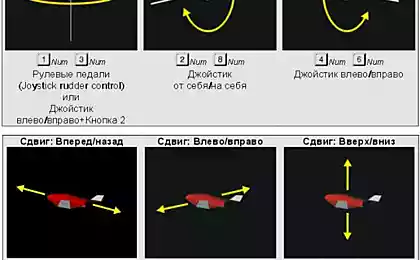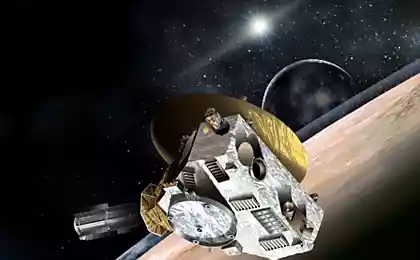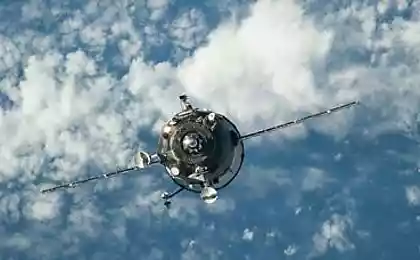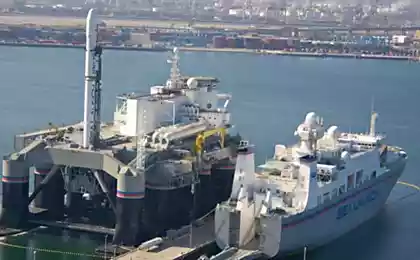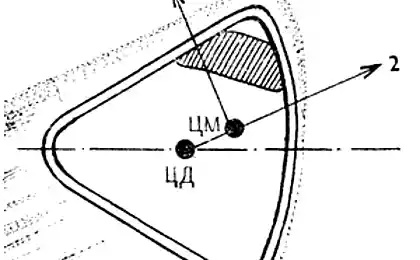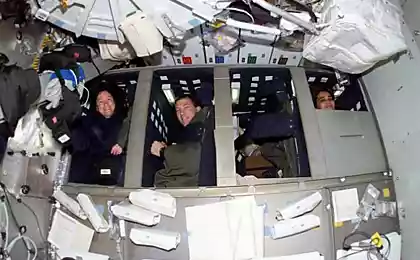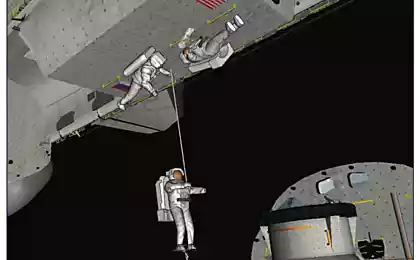649
The jump from orbit

Meteorite hit the spaceship and the crew began a very bad day. engines were damaged, or heat shield, or even some kind of important detail, and the ship lost the opportunity to return to their own orbit. What to do? These issues came to a head engineer at the beginning of the space age. Moreover, at that time it was very much overestimated the density of meteorites in space, and silence the default satellite is destroyed meteor hit. Somehow, it was necessary to save people. But to return from orbit, you need a separate drive, need a spare heat shield to withstand heat from braking in the atmosphere, need a separate chute. All this should be small and light, because the spacecraft every gram and cubic centimeter of gold. A heat shield is also supposed to be a certain shape. Therefore, minimalistic designs were inflatable rescue equipment.
MOOSEV early 60's General Electric Company developed the MOOSE project. Abbreviation originally stands for Man Out Of Space Easiest - The easiest way to return a person from outer space, and may have been a parody of the MISS - Man In Space Soonest (The fastest way to send a man into space), the US Air Force manned program in 1958. Then the project came up with a more "serious" name - Manned Orbital Operations Safety Equipment (Safety Equipment for work at Orbit). And "moose" - it's in English, "elk". In a small container, the size of a suitcase and weighing 90 kg (according to other sources 130 kg), the engineers were able to put a small engine to brake from orbit, tanks with foam, which was to become the core and cushion, foldable shape with thermal protection, parachute, radio and survival kit.
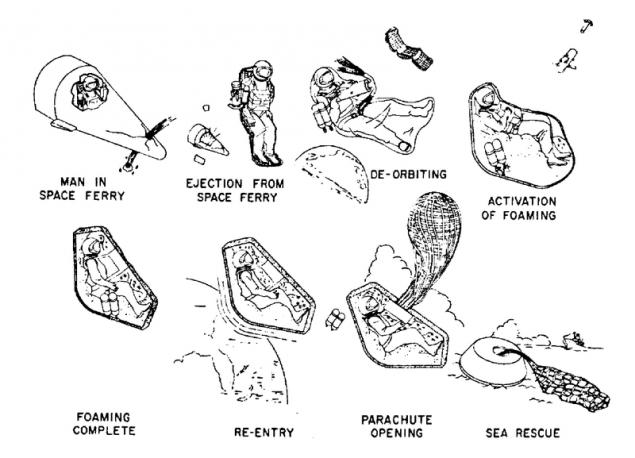
In case of serious problems with the spacecraft, the astronaut had to get out, to slow down with a rocket engine in the hands, to get into the collapsible container and blow out the space with foam. Foam bodied aeroobolochke with thermal protection, aeroobolochka on the principle of "Roly-Poly" supported the right position in the atmosphere, at an altitude of 9 km the parachute is automatically entered, and when you touch the surface of the foam also serve as a shock absorber.
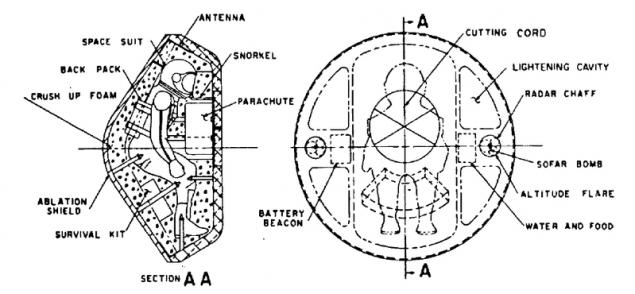
The project has passed the partial test - heat protection element flew to "Mercury", the volunteers were packed in foam mannequins in full-size mock-ups dropped from a low altitude to ensure impact on the ground. A successful parachute jump from a height of Joseph Kittinger in the 31 kilometer, though not been associated with the program, added confidence in the feasibility of the project. MOOSE could become a regular means of salvation for minishattlov X-20, which was supposed to be able to meet not only with meteorites, but also from the need to inspect / steal / destroy possible mined Soviet satellites, or even participate in space shootings. But the program X-20 has been stopped, and no NASA's, nor the United States Air Force for further interest MOOSE not shown. The project is quietly placed on the shelf in the late 60's, though developments on it, probably, were used by the same company for the project "Lifeboat General Electric» (GE Life Raft) 1966, where the crew consisted of three people, and aeroobolochka was tough.

ParaconeV 1963 by another company, of Douglas, offered his own version, very similar technologically, but compares favorably with embeddedness in the ejection seat and parachute replacement at great
«badminton shuttlecock."

After ejection, the front brake motor
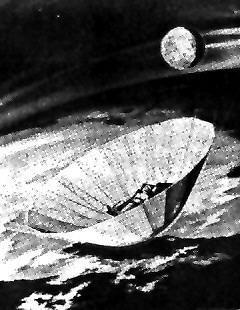
Blog "shuttlecock»
The large area and a small weight is theoretically allowed inflatable cone instead of ablative heat shields used refractory materials (Rene-41 alloy, as well as on the X-20), and at a low altitude to a cone inhibited to about 40 km / h. Strike the ground had to assume crushes the lower part of the cone. Weight of the system was expected comparable MOOSE.
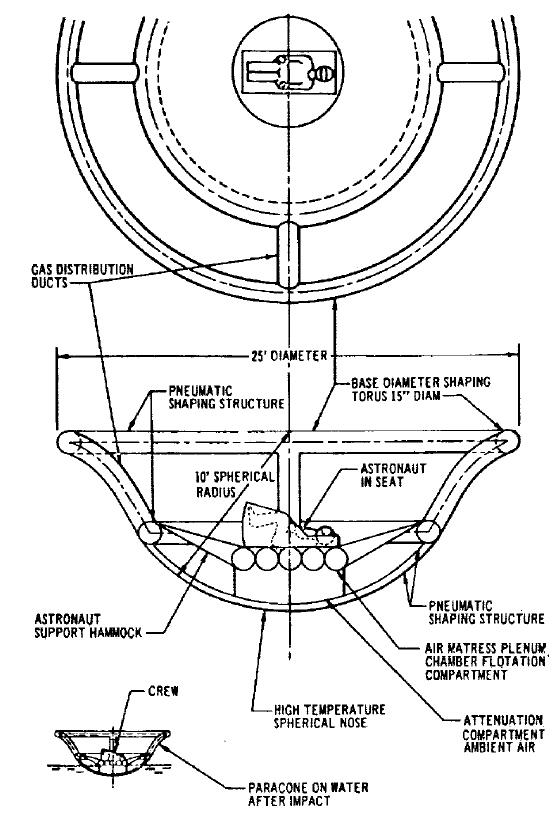
SAVEREsche an interesting option offered engineering company Rockwell. Here, instead of the cone was offered a huge inflated balloon material which had to withstand deceleration in the atmosphere.

minishattle Spiral "Spiral", Soviet designers have gone the other way - a rescue capsule was tough:

The capsule was hampered by a simple solid engine, braking in the atmosphere with the help of already disbursed to other ablative thermal protection devices, to descend by parachute and a blow to extinguish a damper surface is wrinkled.
Other projects English-speaking Internet, you can find information about the Soviet capsule from Uman 1965. According to the description she had to be tough and could be used not only for salvation, but also to work in orbit. Similar capsules were hard maneuvering and in the US, so for example, a sketch MOSES 1975:
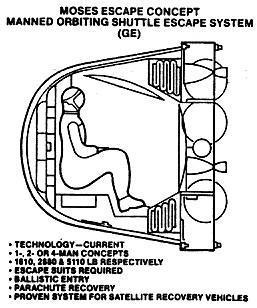
Nemanevriruyuschuyu Rollaway capsule, in fact, for a man bag, offered as a rescue vehicle for the Space Shuttle. This bag had to pull an astronaut in a spacesuit, moving one crew in distress on another shuttle shuttle rescue.
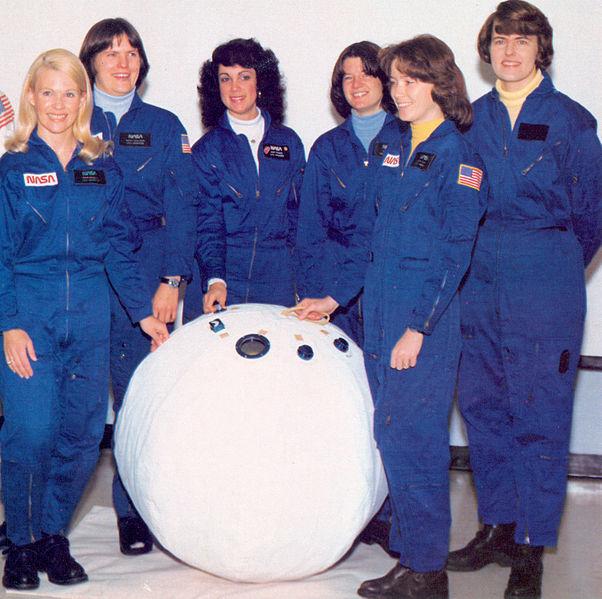
Shuttlecock vozvraschaetsyaProstota concept inflatable tapered braking device means that such projects will appear again. In this way we had to slow down in the "Mars-96" probe the atmosphere of Mars penetrators. NPO. Lavochkin conducted test launches of similar cones and offered besparashyutnuyu rescue system from a height "Rescue»:
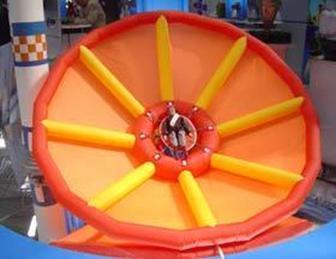
Partially inflatable parachute technology is used in the "flying saucer» LDSD from NASA, and even Geektimes can find a student a diploma with "frill." But the unmanned space program, as told to Alexander Privalov, that's another story.
Pros and minusyTo that these projects did not go into a series of logical. meteorites danger was much less, and shootings in space, fortunately, was not. And it is good because as a means of salvation like structure rather so-so. It is very difficult to manually set the correct orientation for braking such primitive means and braking, keeping the engine in the hands ( "Gravity" and "Martian" you are deceived in this matter). Precision landing turns "around here in this continent," a miss is hundreds of kilometers. Ballistic descent - a 9 "same", which is very uncomfortable. In general, it is easier and more effective to take measures to improve the reliability of spacecraft.
And how would it vyglyadeloTot fact that one does not really jump out of space, does not prevent us to jump into virtuality. In Orbiter addon has the X-20, which has MOOSE. Flew!
Beauty X-20 with the upper stage TransStage flight

The first problem - to combine the orbital plane from Cape Canaveral, where we hope to land
.

Catapulting!
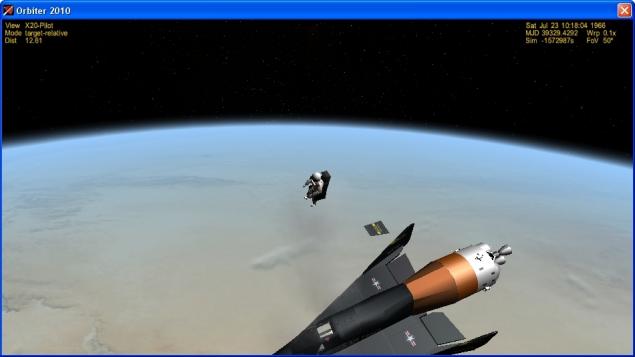
According to the developer of add-engine it would be located in an ejection seat, and the braking would have to turn his feet forward. Brake so that most accurately hit the target (in a real pilot of precision sensors and motors would not be).
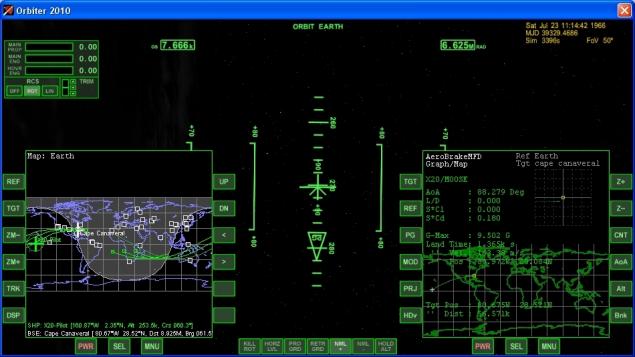
In the pilot's seat, I'd be scared - very wrong form aeroobolochki
.
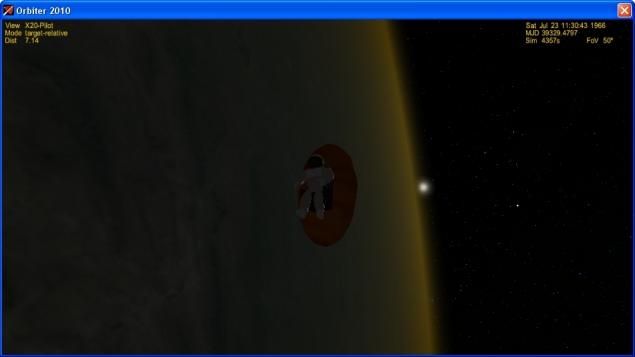
Well, that's right, 8 "same" as warned.
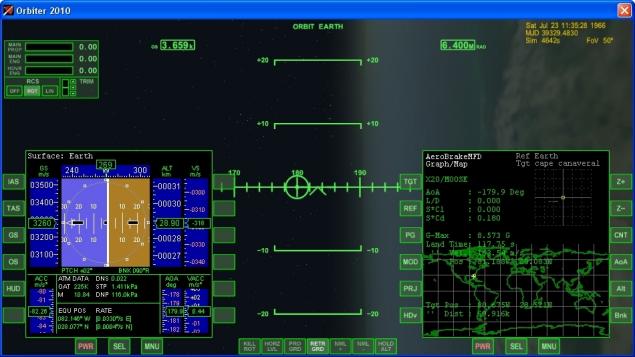
And only then, at an altitude of five kilometers, I remembered that at Cape Canaveral are so many crocodiles ...

The final mistake turned out just 74 km from the launch pads. And there are no crocodiles - landing just outside the tourist center
.
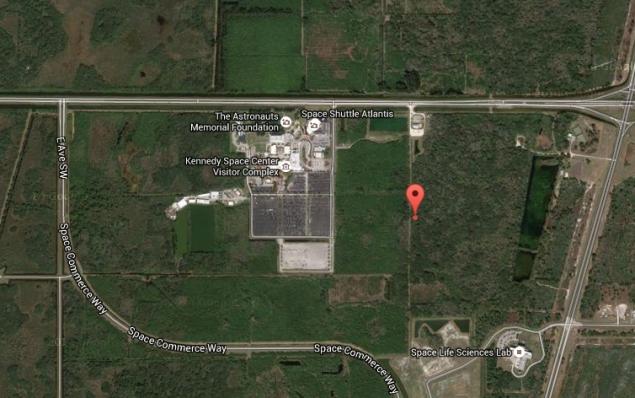
In other tag Orbiter space adventure with this physics
small ads
Source: geektimes.ru/post/276842/
Harappan civilization was ancient Dravidians in the world
The Arctic may soon lose the ice - for the first time in the last 100 000 years
